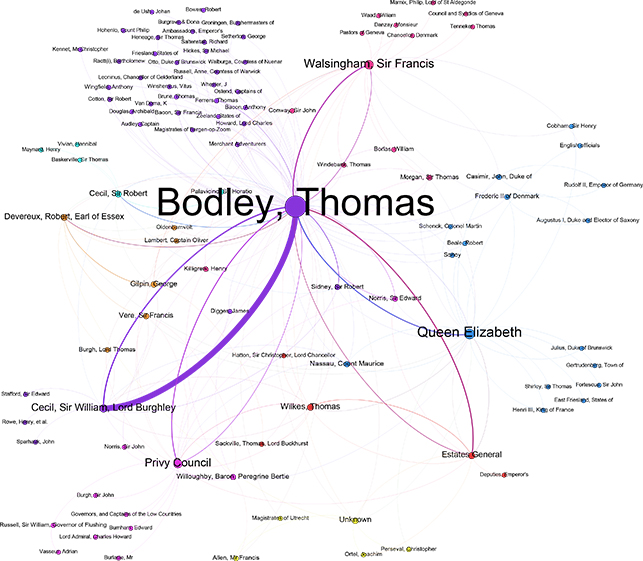
This is a view of the network of authors and recipients created by the metadata collected from all Bodley’s extant correspondence held in UK, European and US archives. This includes correspondents of letters which do not feature in the edition of the Diplomatic Correspondence.
The information is derived from the initial census made at the beginning of the project to edit Bodley’s correspondence between 1585-97. Although Bodley is at the centre of the network (understandably, as he is the link between the nodes), he is not always exclusively either a correspondent or recipient; this visualization includes those instances where Bodley is mentioned. Although the visualization represents the scope of the network, it is difficult to read.
In separating and distributing the correspondence into groups, the visualization becomes more legible and patterns begin to emerge. Colours denote the different communities that have been detected by Gephi’s modularity algorithm. The Force Atlas algorithm has been used to group the various communities of nodes - this algorithm brings together connected nodes while 'forcing away' nodes (and edges) that are not connected, basically cleaning up the network visualization. Once the network was visualized, it was exported as a SVG file into Inkscape in order to adjust the image to make visible all the nodes and their labels (Gephi sometimes cuts off the nodes' labels when outputting the visualization as a PNG or PDF).
The visualization should be read as follows: the lines (edges) go clockwise from the source to the target. For example, of the two curved lines which link Bodley to Lord Burghley, the right one shows the letters Bodley sent to Burghley, and the left one shows the letters sent from Burghley to Bodley.
Data: from Microsoft Access database.
